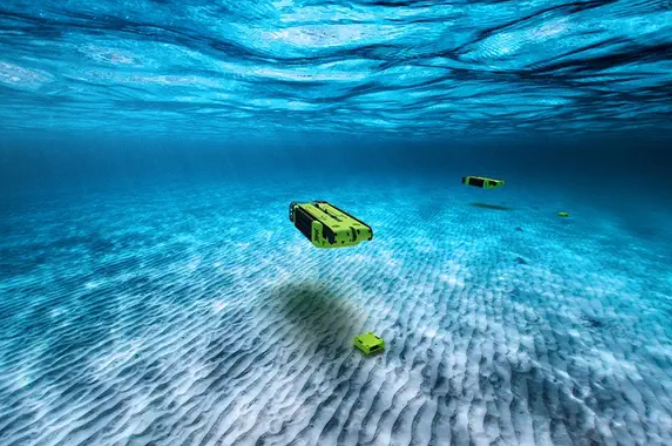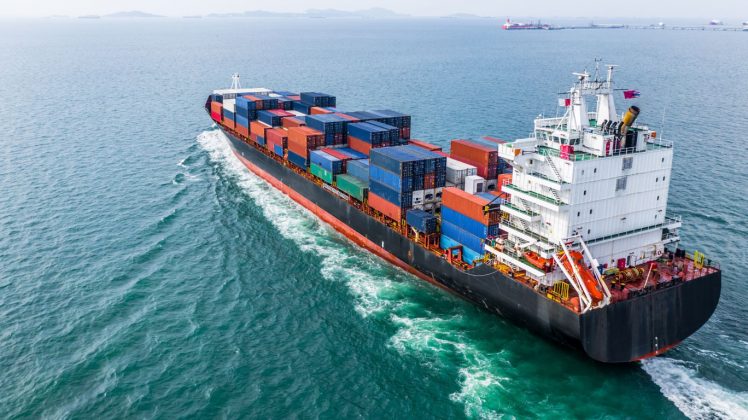Many developments are underway to free underwater seismic and geotechnical study technologies from on-site control.
The deeper you go, the calmer the ocean becomes. This is something Kyrre Tjøm exploits in his approach to revisiting the origins of Ocean Bottom Nodes (OBNs). Like his competitors, the CEO and founder of iDROP is developing autonomous OBNs capable of deploying on the seabed without the support of an ROV.
The current method of deploying nodes, which capture reflected waves during seismic surveys, involves specialized ships and crews. Just one team member falling ill can disrupt the entire survey program, explains Tjøm. This underscores the high demand for expertise.
He has caught the attention of Woodside, ExxonMobil, and others. Unlike his competitors, Tjøm avoids the complexity of high technology, both above and below the surface. One way he achieves this is by harnessing the calm ocean floor to allow his Oceanid OBNs to communicate with each other and with the ship using acoustics. This is facilitated by the presence of vertical OBNs that are not obstructed by seafloor topology.
OBN-to-OBN communication is used for navigation and, in swarm, to produce relatively small but high-resolution seismic data sets. In the future, this will enable the swarm to report to the launch ship even if the ship has moved out of range of an individual OBN.
Ocean Infinity’s Armada surface robot ships require only a reduced crew, as data processing and payload control are handled from land-based operation centers. Source: Ocean Infinity
OBNs are designed to descend to the seabed without the need for an ROV or DP-positioned mothership. As part of their patented autonomy, OBNs will use flight data to create a current profile as they pass through the water column on a predefined heading, constantly adjusting the angle of attack to create the required lift for autonomous navigation while the deployment ship moves. on.
While other autonomous OBNs use 50% of their battery power for launch and recovery operations, iDROP’s gravitational OBNs use about 5%. They use their rudders and landing gear to slow their descent before landing and correct their vertical tilt before mechanically deploying their sensor payload into the seabed. Since there is no need for ROVs or umbilical cables, if an OBN does not meet its target specifications, deploying another is straightforward.
Each OBN measures about one meter long and weighs approximately 25 kilograms. The entire swarm system is containerized, up to 250 OBNs per container, and can be deployed by the deck crew of an OSV without the aid of an ROV. « We can scale it down to one OBN or up to 7,000. It really doesn’t matter. It’s just a number of containers, » explains Tjøm. « Deployment is 50% faster than with ROVs and recovery is 50% faster. » This greater simplicity is accompanied by a 95% reduction in greenhouse gas emissions, he says.
iDROP and some of its competitors hope to move beyond pilot trials this year. Their competitors have similar goals, claiming reduced emissions and dramatically reduced deployment logistics. Last year, Blue Ocean Seismic Services claimed that its autonomous OBNs outperformed ROV-positioned OBNs. PXGEO uses stationary autonomous underwater vehicles instead of ROVs, claiming they can deploy and recover OBNs much faster and with greater accuracy than traditional methods.
« Geotechnical drilling and sampling will evolve towards fully autonomous operations on the seabed. » Andrew Galbraith, CEO of Ocean Infinity Source: Ocean InfinityOcean Infinity does not remove ROVs from its autonomous processes but eliminates human supervision on site. This year, the company signed an agreement with Shell for the provision of robotic geophysical and geotechnical services with reduced crews. This includes using various sizes of Ocean Infinity’s Armada robotic surface ships that require only a reduced crew as data processing and payload control are handled from land-based operation centers.
Andrew Galbraith, CEO of Ocean Infinity, explains that while ROV drilling operations are integral to the Armada solution, the difference lies in their integration within a comprehensive system. « ROVs are launched, recovered, and operated from an Armada ship, alongside various other payloads like Ocean Drill, SonicCorer, Infinity CPT, and AUVs. This consolidated approach optimizes efficiency and coordination of offshore operations. »
Ocean Infinity has already entered the offshore wind geotechnical market with its new autonomous cone penetration testing device (CPT), Infinity CPT 250. Last year, for the Ossian wind farm, deep push CPTs on the seabed, seismic seabed CPTs, and vibrocore operations were performed remotely using horizon sent remote control.
Recent advances in AI and low-latency, low-orbit satellite communications have greatly improved remote control solutions and real-time data transfer to achieve this. Infinity CPT and other payloads communicate directly with the mother ship’s control systems via a lifting umbilical. Ship control systems communicate via satellite with remote control centers and the cloud. Infinity CPT can receive mission statements and execute them with minimal supervision. Data is automatically processed and reported to clients.
Galbraith sees a future where geotechnical drilling and sampling will evolve towards fully autonomous operations on the seabed. This includes autonomous ocean drills capable of independently studying the subsurface, retrieving and storing soil samples with minimal human intervention. Intelligent control system software will facilitate this autonomous functionality, requiring only a mission statement for the robot to perform tasks optimally.
Robots like Ocean Drill or SoniCorer from Ocean Infinity rely on a set of sensors used by algorithms to allow the robot to interact with the environment it encounters when performing a given task. Sensor data will also be used to monitor or monitor the robot’s status and allow the human monitor to intervene if necessary from a remote location.
As more offshore operations are carried out and Ocean Infinity systems prove effective and reliable, they will require less supervision.
For example, part of Ocean Drill’s control system includes a product called Smart Drill, which will ultimately replace the need for a human driller making operational decisions. Smart Drill relies on a set of training data related to a target drilling to plan and drill it efficiently with minimal supervision.
Ultimately, the Armada ships themselves will operate without a crew on board. They will use zero-emission fuel and perform data acquisition and intervention operations at sea to depths of 6,000 meters.




